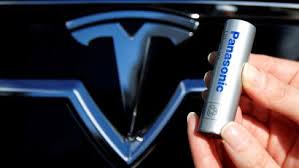
Breaking News
 Is Yen Carry Trade's unwind about to trigger a repo market meltdown? Let's dive into the mec
Is Yen Carry Trade's unwind about to trigger a repo market meltdown? Let's dive into the mec
 Chairman Rand Paul Releases New Report Revealing Hundreds of Billions...
Chairman Rand Paul Releases New Report Revealing Hundreds of Billions...
 Get Schiffty Music Video | Rick and Morty | Adult Swim
Get Schiffty Music Video | Rick and Morty | Adult Swim
Top Tech News
 This tiny dev board is packed with features for ambitious makers
This tiny dev board is packed with features for ambitious makers
 Scientists Discover Gel to Regrow Tooth Enamel
Scientists Discover Gel to Regrow Tooth Enamel
 Vitamin C and Dandelion Root Killing Cancer Cells -- as Former CDC Director Calls for COVID-19...
Vitamin C and Dandelion Root Killing Cancer Cells -- as Former CDC Director Calls for COVID-19...
 Galactic Brain: US firm plans space-based data centers, power grid to challenge China
Galactic Brain: US firm plans space-based data centers, power grid to challenge China
 A microbial cleanup for glyphosate just earned a patent. Here's why that matters
A microbial cleanup for glyphosate just earned a patent. Here's why that matters
 Japan Breaks Internet Speed Record with 5 Million Times Faster Data Transfer
Japan Breaks Internet Speed Record with 5 Million Times Faster Data Transfer
 Advanced Propulsion Resources Part 1 of 2
Advanced Propulsion Resources Part 1 of 2
 PulsarFusion a forward-thinking UK aerospace company, is pushing the boundaries of space travel...
PulsarFusion a forward-thinking UK aerospace company, is pushing the boundaries of space travel...
 Dinky little laser box throws big-screen entertainment from inches away
Dinky little laser box throws big-screen entertainment from inches away
 'World's first' sodium-ion flashlight shines bright even at -40 ºF
'World's first' sodium-ion flashlight shines bright even at -40 ºF
Tesla Next Generation Lithium Batteries vs Solid State Batteries from Everyone Else

Almost all car and truck makers are betting next-generation batteries will be solid state batteries except Tesla which is betting on dry electrode battery technology.
Tesla is also developing the advanced lithium ion batteries of Dalhousie University battery expert Jeff Dahn. Dahn has lithium ion batteries pouch cells in the lab that can outperform solid-state batteries.
Nature Energy – Long cycle life and dendrite-free lithium morphology in anode-free lithium pouch cells enabled by a dual-salt liquid electrolyte
Cells with lithium-metal anodes are viewed as the most viable future technology, with higher energy density than existing lithium-ion batteries. Many researchers believe that for lithium-metal cells, the typical liquid electrolyte used in lithium-ion batteries must be replaced with a solid-state electrolyte to maintain the flat, dendrite-free lithium morphologies necessary for long-term stable cycling. Here, we show that anode-free lithium-metal pouch cells with a dual-salt LiDFOB/LiBF4 liquid electrolyte have 80% capacity remaining after 90 charge–discharge cycles, which is the longest life demonstrated to date for cells with zero excess lithium. The liquid electrolyte enables smooth dendrite-free lithium morphology comprised of densely packed columns even after 50 charge–discharge cycles. NMR measurements reveal that the electrolyte salts responsible for the excellent lithium morphology are slowly consumed during cycling.



